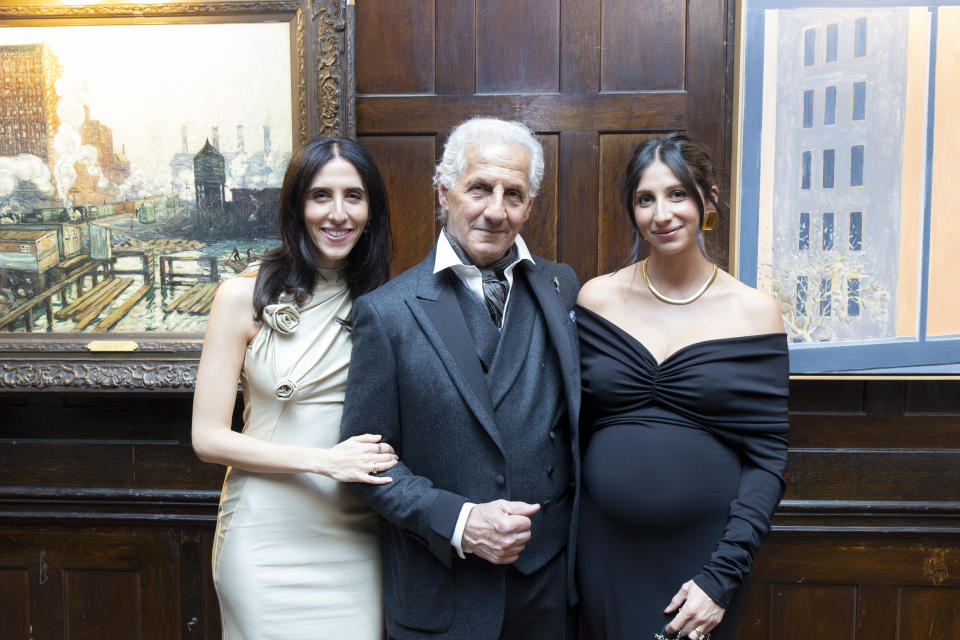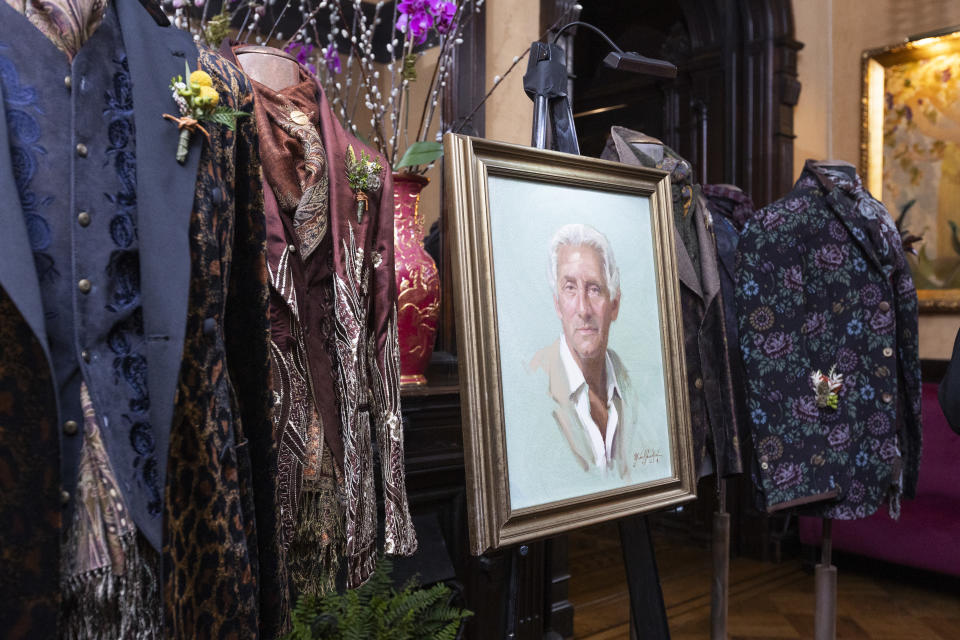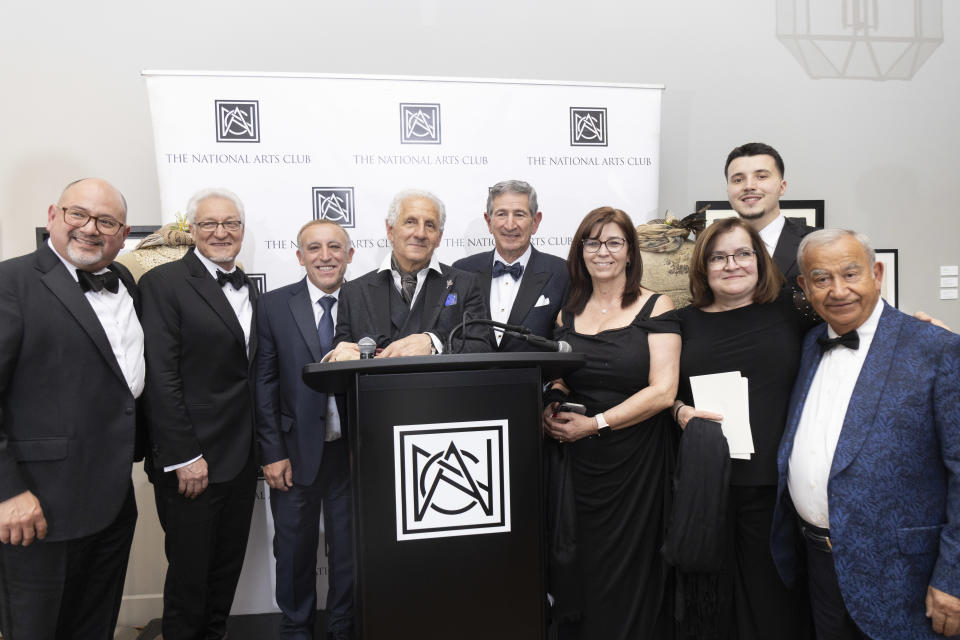Hugs and Accolades for Joseph Abboud at Medal of Honor Event

From the newly painted portrait that will hang among the Impressionist and Realist works in its permanent collection to the Boston Red Sox-themed dessert, the National Arts Club’s black-tie dinner presenting Joseph Abboud its Medal of Honor on Friday night was a major lovefest to the designer.
The very first menswear designer to receive the award, Abboud joins an esteemed group of fashion luminaries including Norma Kamali, Oleg Cassini, Narciso Rodriguez and Anna Sui who have been awarded the group’s medal over the years.
More from WWD
Yves Saint Laurent Exhibit Coming to Southern California's Orange County Museum of Art
Joseph Abboud on the National Arts Club's Medal of Honor, Menswear and His Next Chapter
Helping Abboud celebrate were actor and author Chazz Palminteri, news anchor Ernie Anastos, a group of craftsmen from the company’s factory in New Bedford, Mass., and his daughters Lila and Ari with their husbands. (His wife Lynn had broken her tibia on vacation and was unable to attend.)

“Joseph called me weeks ago and said, ‘Chazz, I’m getting an award and I would like you to be one of the speakers,’” Palminteri said. “And I said, ‘What’s the award?’ And he said, ‘The Medal of Honor.’ And I said, ‘I didn’t know you were in Vietnam.’”
Turning more serious, the actor related Abboud’s path from studying English and French literature and attending the Sorbonne in Paris to the creation of his own label after working for Louis, Boston in his hometown, followed by Ralph Lauren. “He worked five years for the father of men’s design but wanted to do something on his own because he had this talent and a vision. His first collection was a huge success. [It was picked up by] Barneys, Saks Fifth Avenue and Bergdorf Goodman, which wasn’t even selling men’s clothes then.”
Palminteri attributed the success of the Joseph Abboud collection to the fact that he created a line that let “men look like men. I call that a classic.”
Palminteri, a diehard Yankees fan, also told the story about how the Red Sox-crazed Abboud used to listen to games with his father on their porch while he was growing up. The elder Abboud was disabled and never able to make the trek out to see a game in person. After he achieved success with his collection, Abboud was asked to throw out the first pitch at Fenway Park in Boston and practiced for weeks to ensure he could throw it from the mound all 60 feet 6 inches to the plate. He did and on the Jumbotron these words appeared: “‘To my dad Joseph from your son Joseph. We finally got to Fenway,'” Palminteri said.

Anastos met Abboud in 1977 when he was anchoring the news in Providence, R.I., and putting together a piece on men’s style and fashion called “The Masculine Mystique.” Anastos went to Louis, Boston which recommended one of its employees, Abboud, to do the interview. “I didn’t realize this was Joseph’s first television interview,” Anastos said. “He was a delight, and he looked great.”
They’ve been friends ever since.
“We all know about his great success,” he said. “But more importantly, Joseph is a terrific human being. He’s a family guy. He loves his work. He’s done charity work for breast cancer, which is very personal to him. He talks about spirituality and about the great designer, God. I was moved by that. And he said, ‘I try to continue that work.’ He cares, he’s sensitive, alert and wants to do something with his life that makes a difference. You know, having a sense of purpose in your life makes everything worthwhile. And this is what Joseph is about.”
In his acceptance speech, Abboud said receiving the medal was particularly special to him because it recognized his “inner spirit” more than just his work.

And while he didn’t know everyone in attendance, he said, “it feels like a room of friends” filled the intimate space. They included a table full of tailors and production people from the New Bedford factory, which he describes as his family and the “lifeblood” for creating his collections.
He went on to tell a story about how he and his wife were walking on a beach in Nantucket and the colors of the glistening rocks on the beach were magical to him. He picked up around 20 pounds of rocks, carried them home, waxed them so they retained their magnificent color and brought them all the way to Scotland to an obscure yarn spinner to replicate the hues for his knitwear.
“It was one of my most successful sweater collections,” he said. “And that’s what creativity is — bringing a dream to life and saying, ‘Why can’t I do this? Why not create something beautiful?’ And this club exemplifies that beauty. Thank you all for this extraordinary honor.”
Best of WWD
